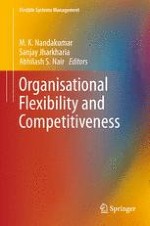2014 | OriginalPaper | Buchkapitel
9. Do Gender, Position, and Organization Shape Human Resource Flexibility?
verfasst von : Umesh Kumar Bamel, Dr. Santosh Rangnekar, Prof. Renu Rastogi
Erschienen in: Organisational Flexibility and Competitiveness
Verlag: Springer India
Aktivieren Sie unsere intelligente Suche, um passende Fachinhalte oder Patente zu finden.
Wählen Sie Textabschnitte aus um mit Künstlicher Intelligenz passenden Patente zu finden. powered by
Markieren Sie Textabschnitte, um KI-gestützt weitere passende Inhalte zu finden. powered by
